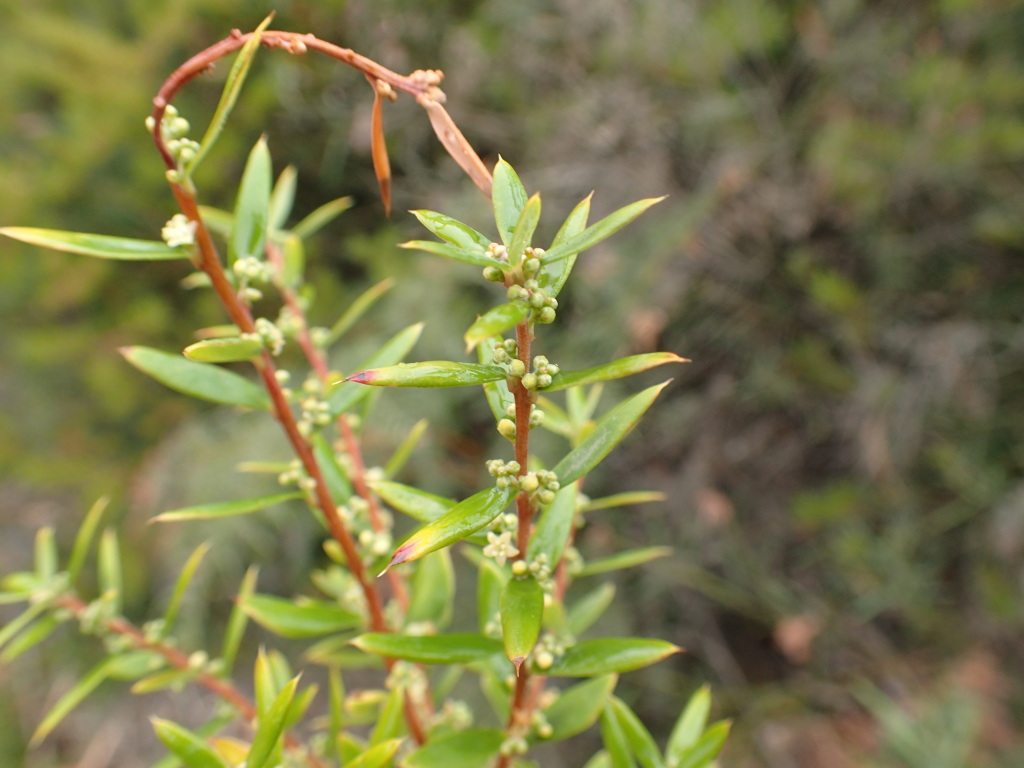Monotoca glauca
(Labill.) DruceDense, non-lignotuberous shrub or small tree to c. 7 m high; branchlets puberulous. Leaves elliptic to oblanceolate, c. 8–26(–32) mm long, 2.1–6.5 mm wide, mucronate, flat to convex, glabrous, lower surface usually distinctly whitish; margins smooth, plane to recurved; petioles puberulous abaxially when young. Flowers 2–13, in axillary spikes or the lowermost solitary and pedunculate; lowermost spikes with peduncle (0.4-)0.8–3(–4) mm long, sterile bracts very rarely present; bracts, bracteoles and sepals obtuse; bracts persistent, 0.3–1.2 mm long; bracteoles 0.4–1.1 mm long; sepals 0.6–1.3 mm long; corolla rotate-campanulate, 1.1–1.8 mm long in female flowers; 1.4–2.3 mm long in males; lobes glabrous to papillose, slightly to c. twice as long as tube; anthers 0.6–1.1 mm long, exserted from corolla tube; ovary plus style 0.8–1.2 mm long. Fruit ovoid, ellipsoid or spherical, 1.8–2.4 mm long, greyish-purple at maturity. Flowers Sep.–Apr.
GipP, OtP, WaP, CVU, GGr, EGL, WPro, OtR, Strz. Also Tas. Occurs on infertile sandy soils at sea-level or on near-coastal high-rainfall ranges. Grows in open-forest, heathy woodland, wet closed scrub and margins of cool-temperate rainforest.
Occasional plants produce inflorescences containing both functionally male and female flowers. In such cases the female flowers are usually basal on spikes and males distal.
Previously confused with M. elliptica. The two species grow in close proximity at Wilsons Promontory, rarely hybridizing where populations abut. Also rarely hybridizes with M. scoparia.
Albrecht, D.E. (1996). Epacridaceae. In: Walsh, N.G.; Entwisle, T.J., Flora of Victoria Vol. 3, Dicotyledons Winteraceae to Myrtaceae, pp. 464–509. Inkata Press, Melbourne.
 Spinning
Spinning